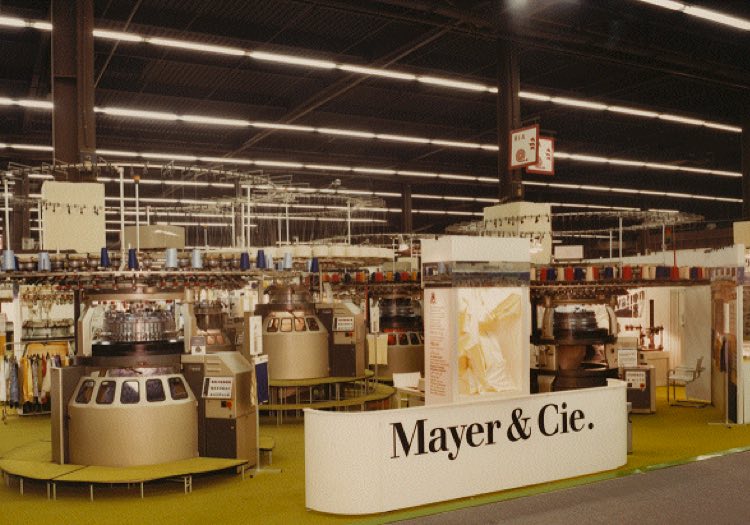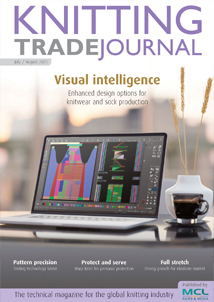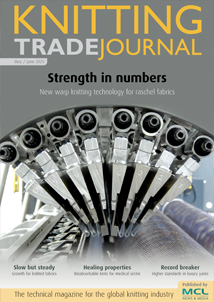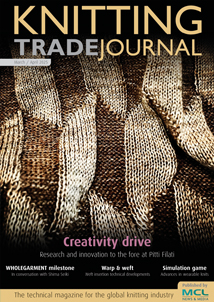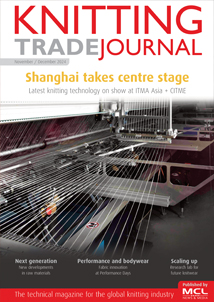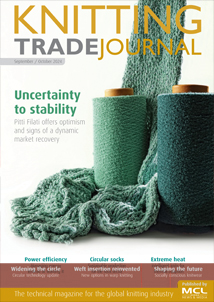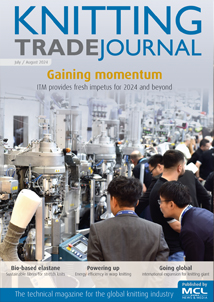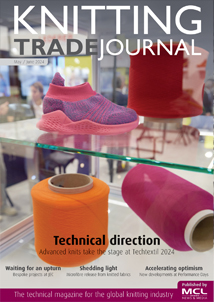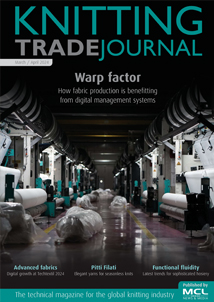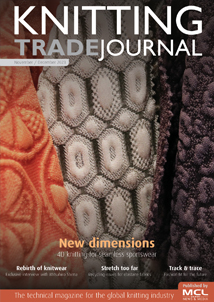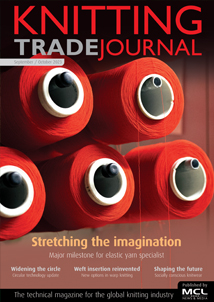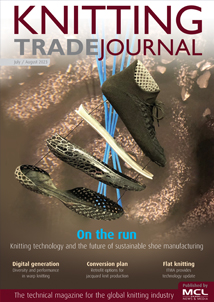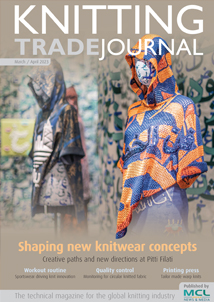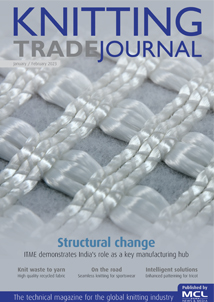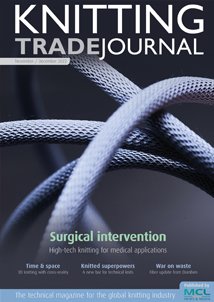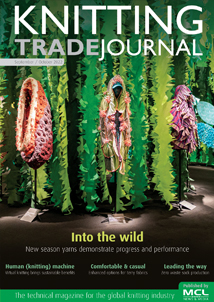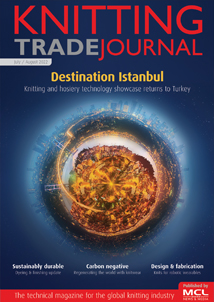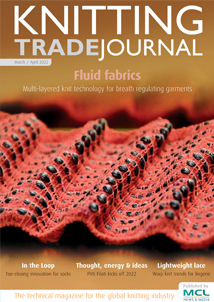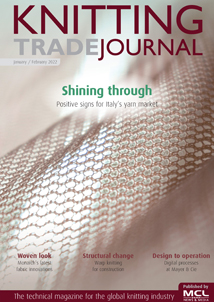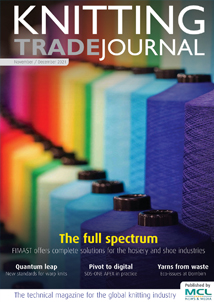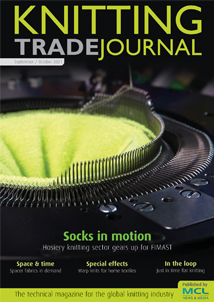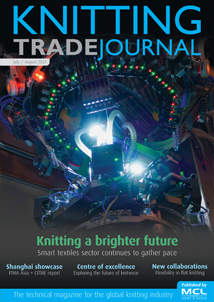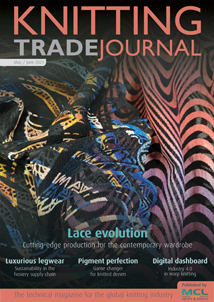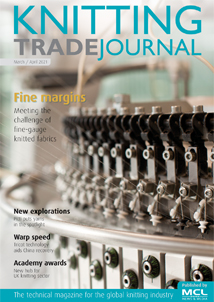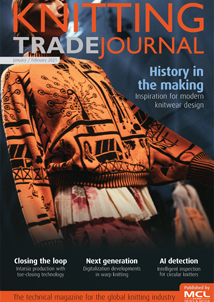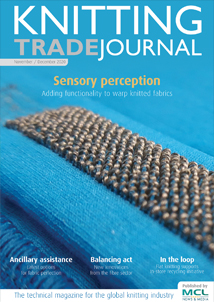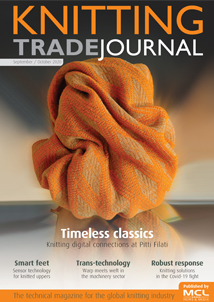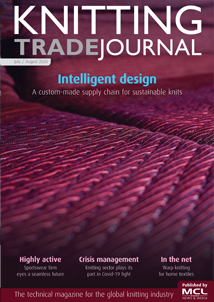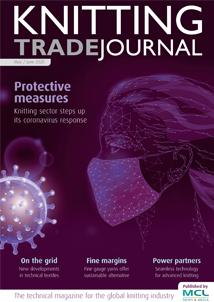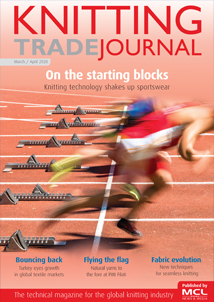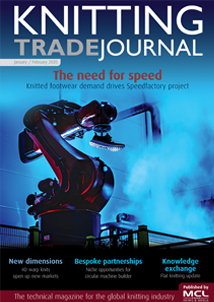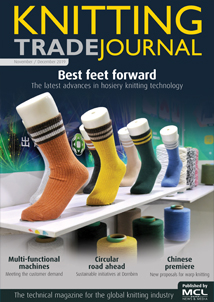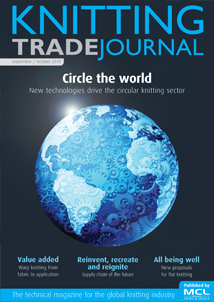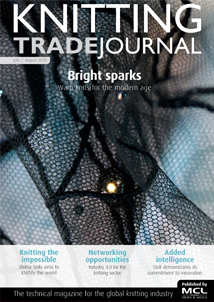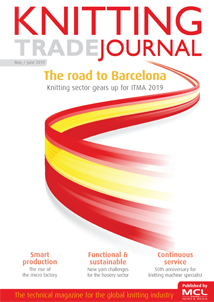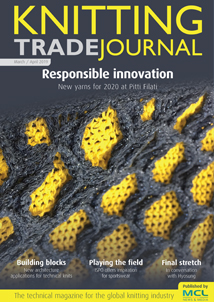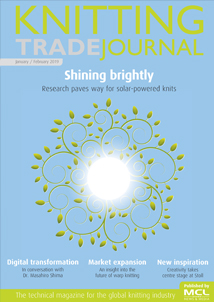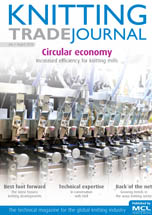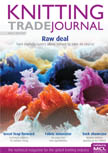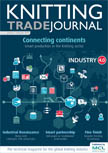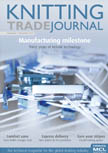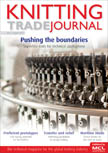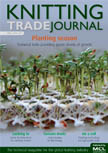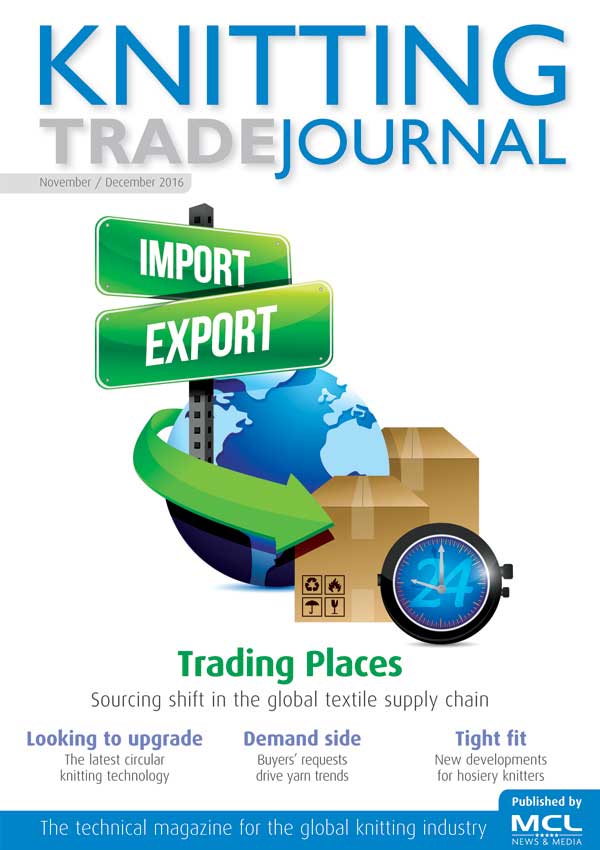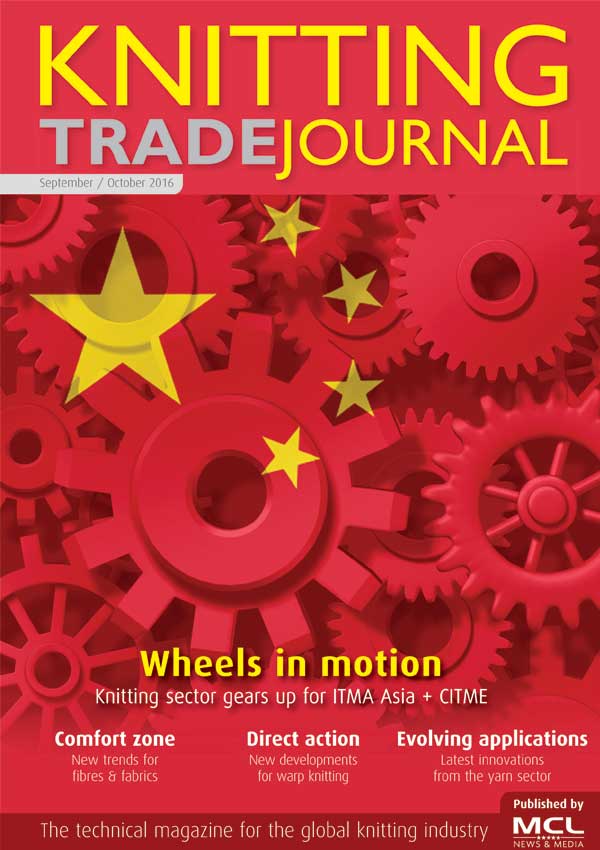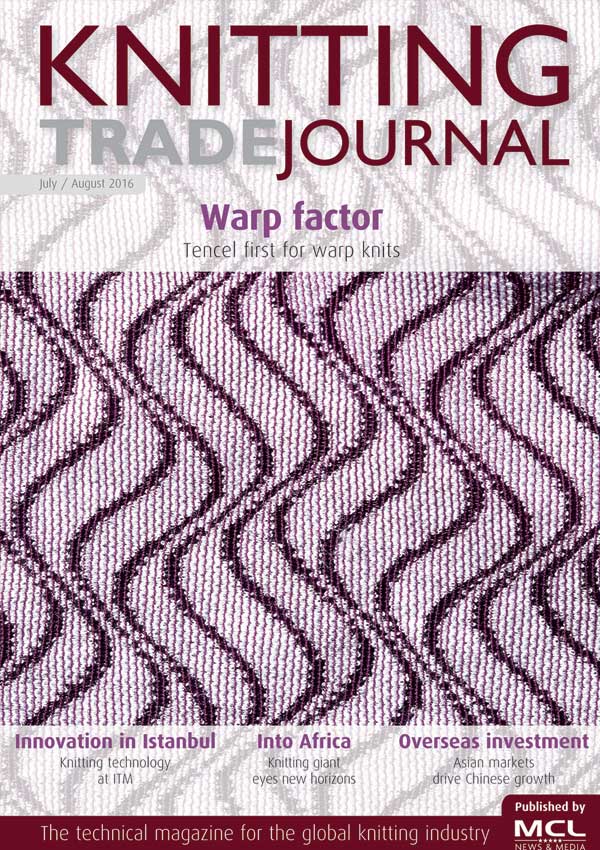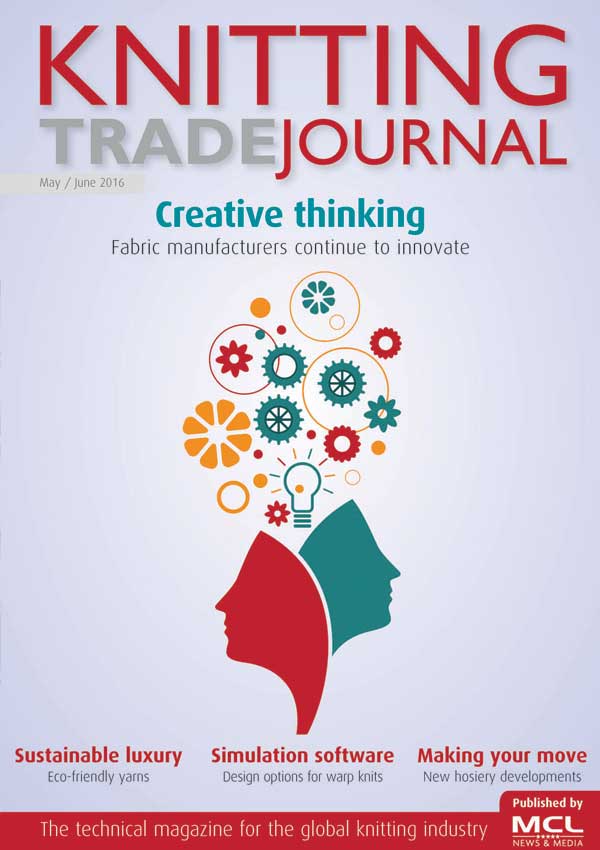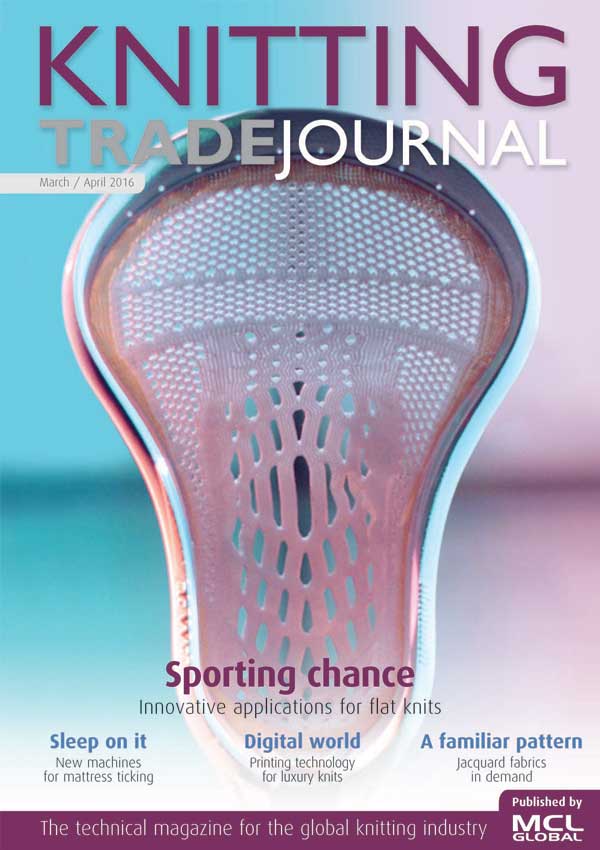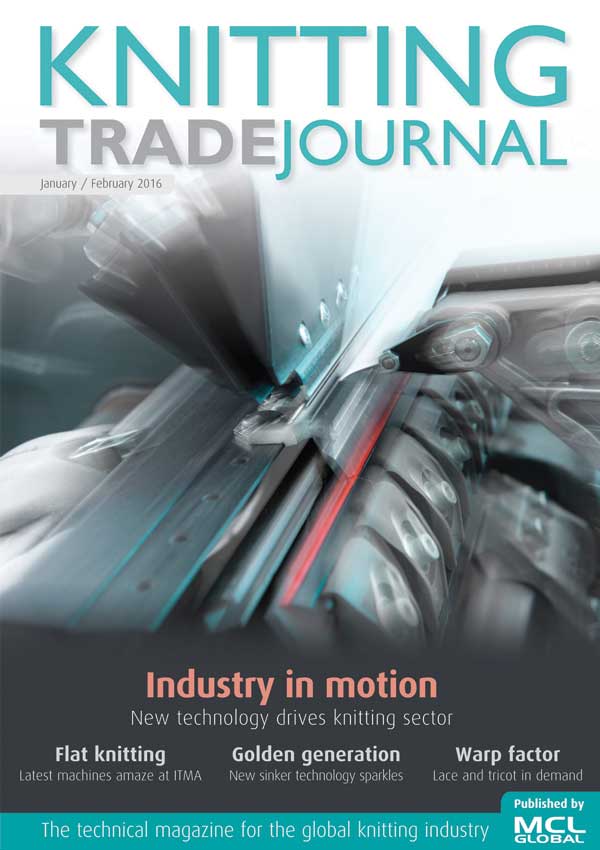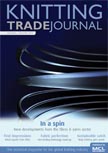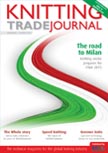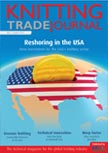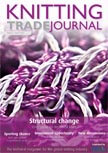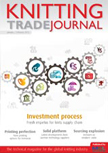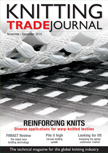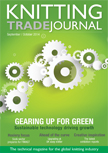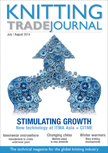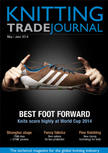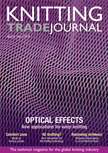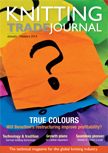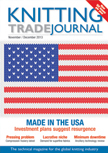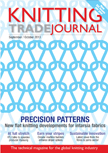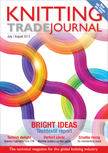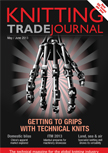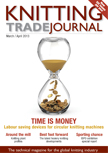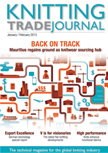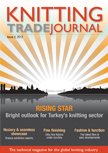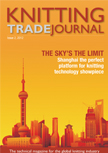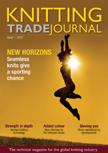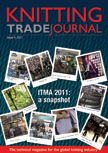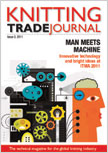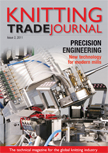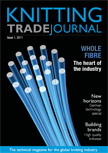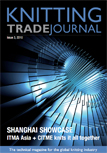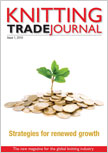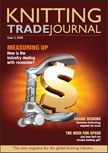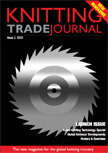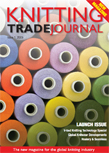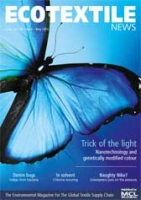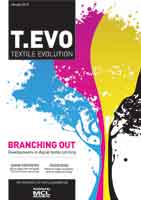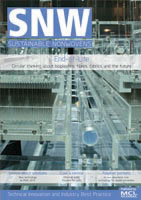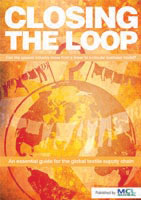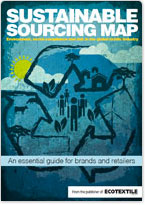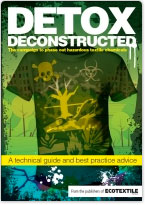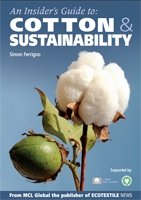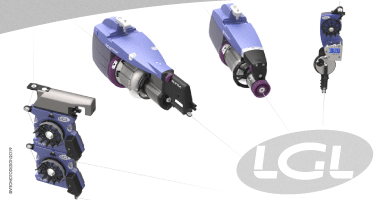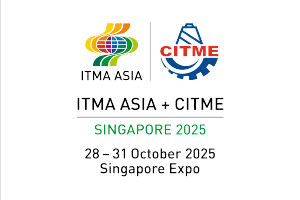Albstadt - Technology development at Mayer & Cie reaches a milestone this month with the company celebrating the 30th anniversary of its renowned Relanit circular knitting technology.
Relanit is one of the Albstadt, Germany-based firm's most important and most successful machine types. It uses relative technology, the circular knitting machine manufacturer’s proprietary development, launched at ITMA in 1987, when the trade fair opened on 13 October in Paris.
In its current version the Relanit 3.2 HS is one of the most productive single jersey machines on the market while at the same time, ensuring that energy consumption is 30 per cent below that of a conventional knitting machine. Relanit is also part of Mayer & Cie’s latest innovation, its spinitsystems technology. As the company says, thanks to relative technology a fragile fibre bundle can become a fluffy single jersey fabric.
“Relative technology is still the shape of things to come, 30 years after the start of series production,” said Marcus Mayer, Managing Director Mayer & Cie in charge of technical development. “It exemplifies what we stand for, for our values and our aspiration to always be one step ahead.”
Conventional knitting machines usually work with horizontal sinkers. That means the needle moves up and down while the sinker works horizontally. With relative technology, the sinker too moves up and down.
Relatively speaking, it shifts towards the needle, a movement which brings relative technology’s biggest advantage: in comparison to conventional technology, the yarn only has to travel half the number of deflection points to form a stitch.
Each deflection means less stress on the yarn, which is why Relanit can process difficult yarn or inferior qualities without a hitch - not only to form a fabric of a certain quality but also without making amends in terms of production speed or machine downtimes. Both would be the case if inferior quality yarn were to be processed on a conventional machine. Because yarn is the key cost factor in knitting, Mayer and Cie says that Relanit can help the knitter to save a lot of money – and that means to make a profit.
“When we unveiled Relanit at the Paris ITMA 30 years ago, it was unmatched in production, speed, yarn care and energy efficiency,” Marcus Mayer added. “And it still is. We are not aware of any company that has succeeded in replicating the technology. As our patent expired years ago, that would be possible. And nobody has developed a better technology that combines all these benefits either, by the way.”
While relative technology in itself has remained unchanged, it has grown to keep pace with technological development. The line’s current flagship is the Relanit 3.2 HS. Mayer & Cie describe it as one of the most productive single jersey machines in the market, both for open width as well as tubular production. In fact, at 50 rpm it works with elastomeric yarns just as well as with cotton, the machine’s traditional speciality. Furthermore, the Relanit 3.2 HS uses up to a third less energy than a conventional circular knitting machine.
In addition to the Relanit 3.2 HS, the current Mayer & Cie. portfolio comprises a further eight Relanit machines, with striping machines, electronic and mechanical types among them.
Every year, around 300 Relanit machines find their way to clients all around the globe. The specialists in cotton yarn are most popular in Turkey, followed by Brazil and China. Overall, Mayer & Cie. has sold 10,000 units, delivered to about 90 countries worldwide. That means about a quarter of all machines sold in the past 30 years belong to the Relanit family.
Future potential
Mayer & Cie's spinitsystems is the company’s latest innovation and it would not be possible without relative technology. The spinning and knitting machine Spinit 3.0 E combines formerly strictly separated processes – spinning, cleaning and knitting.
The raw material it works with is a not a regular cotton yarn but a roving which easily dissolves when rubbing or tearing it. This is exactly the material that Spinit 3.0 processes. Relative technology deserves much of the credit for it succeeding in doing so. The fibre bundle travels a much shorter distance and is subject to less tension than would be the case with conventional knitting technology. In short, it is thanks to relative technology that a fragile roving can be transformed into fluffy single jersey on Spinit 3.0 E.
“That makes Relanit not only a technology we are very proud of, but also an obligation for the future,” Marcus Mayer concluded.
“Nothing but Relanit”
From the 1987 ITMA on, Mayer & Cie began to receive orders for machines with relative technology. The first three Relanits were shipped to Berlin in January 1988. Jürgen Müller assembled them. He is still with Mayer & Cie, as are his colleagues Johannes Bitzer, Axel Brünner, Rolf Gonser and Thomas Maier. All five of them worked as technicians in final assembly back in 1987. In this interview, they recall their pioneering days with the Relanit.
Mayer & Cie: Even before the Relanit went into series production there must have been talk about the new technology. Were you aware that this new machine was going to be something special?
Johannes Bitzer: That much we knew, but we weren’t consciously aware of the fact. At the development stage we still had no clear idea of what was different about it. That only happened when the machine arrived in the assembly department and we had to deal with it – especially as we were the ones who went with it to the customer to set it up and explain it to him.
Axel Brünner: The system was different then from how it is today. Technicians were sent out from the assembly department to set up and service the machine. Today that is the job of the service department with its full-time travelling fitters. That was why, back then, everybody had to be up to speed on the subject because, as a rule, the technician who assembled the machine was in charge of setting it up at the customer’s facility.
M&C: More than 500 machines were sold in less than three years and 1,000 in four years. That was remarkable. What did this success mean for you personally?
Axel Brünner: For us it was good. We were still greenhorns but we knew as much about the new technology as the old technicians. They were something special and they didn’t tell us young ’uns everything. They had their little books they made notes in about how to do this or that. That was an opportunity for us to grow with the new technology. We saw how successful it was out there.
With the old machines you needed a lot of knowledge and experience, you could do a lot more adjustment yourself. With the Relanit, technically speaking, there is nothing to change but the stitch length. So the Relanit was a springboard for us youngsters to acquaint ourselves with the technology. For that reason alone I have always been fascinated by the technology.
M&C: Were there uses of the Relanit that surprised you?
Axel Brünner: Difficult yarns, poorer qualities. That was why it was a success in countries where these kinds of yarn were often used.
M&C:Did that really come as a surprise to you?
Axel Brünner: Well, it was a surprise for the customers. For us, of course, it was more the objective. The relative movement and with it fewer deflection points was precisely the advantage we wanted to put to good use. That was why we were very successful right away in Egypt, for example. The good our performance for your profit cotton – hand-picked – was sold by the state to earn foreign exchange and the local knitters were left to process the rest. That worked extremely well with the Relanit.
Jürgen Müller: It wasn’t only poorer quality yarns but thicker yarns too. Yet the machine ran at full capacity where others would have had to slow down by 50 per cent. The Relanit ran at 80, 90, 100 per cent.
Axel Brünner: That was then a cost benefit for the customer because thicker yarn costs less than finely spun yarn.
M&C: Did you feel proud once it was clear that the technology was so successful?
Axel Brünner: It’s always a good feeling when things work! One of our competitors was at the same level as Mayer back then. So it was great to see our own machines compared with the competition and to know that the sales figures were good. For me that was certainly quite an experience. If you identify with the firm, you identify with the product too.
Thomas Maier: It was also soon clear that the success of the product safeguarded our jobs. For a while, we manufactured nothing but Relanit, nothing else ran off the assembly line. That proves you have got something right and it makes you feel satisfied. It also shows that your job is safe, especially after the lengthy crisis of the 1970s.
M&C: Why is a technology still cutting-edge after 30 years?
Axel Brünner: It’s like the GTI. It’s no longer the car it was 30 or 40 years ago; it went on to be developed to where it is today. You have to realise that manufacturing options today are a far cry from what they were 30 years ago. They too have grown over time. In the past you might well have liked to have one part or another work differently, but that was simply not possible production-wise. In production today we are now able to put ideas of the past into practice. The technology has grown over the years.
Rolf Gonser: In the past many things were not possible to the tolerance required or could not be manufactured at acceptable prices.
M&C: And the customers: Do they stick with Relanit?
Axel Brünner: Yes, some certainly do. We have regular customers who swear by these machines. They are aware of the benefits and put them to good use. For a certain product range the Relanit is then their perfect solution. It wouldn’t be true to say that it is always the right solution, but there is a certain product area for which it is perfect. Better than any other machine. If the fit is right – the product, the machine and the customer – you are onto a winner.



